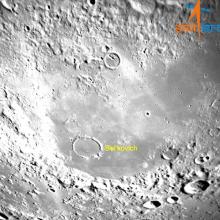Listen to today's episode of StarDate on the web the same day it airs in high-quality streaming audio without any extra ads or announcements. Choose a $8 one-month pass, or listen every day for a year for just $30.
You are here
New Moon
Under the current western calendar, tomorrow is the 16th day of the month. But under another system, it’s the first day of the month — a month based completely on the phases of the Moon.
The concept of a “month” came from that cycle of phases. The cycle lasts an average of 29 days, 12 hours, 44 minutes, and 3 seconds — roughly the length of a calendar month. In fact, the word “month” means “Moon.” But in the modern calendar, each month is a whole number of days. So the lunar phases drift — they don’t occur on the same day of the month.
The true lunar month is called a lunation. It begins and ends at new Moon — when the Moon passes between Earth and the Sun, and is hidden in the Sun’s glare. And the Moon will be new in the wee hours of tomorrow morning for those of us in the United States, starting a new lunar month.
Lunations aren’t all quite the same length. The Moon’s orbit around Earth is lopsided, and the phases don’t stay in sync with the Moon’s changing distance. So the length of a lunation can vary by about seven hours in either direction. The Moon is at its farthest from Earth tonight, so this lunation will be about three and a half hours longer than the average. And under a numbering system developed in the 1930s, it’s lunation number 1245.
The Moon will return to view on Thursday, as a thin crescent quite low in the west after sunset — the first appearance of a “new” lunar month.
Script by Damond Benningfield






